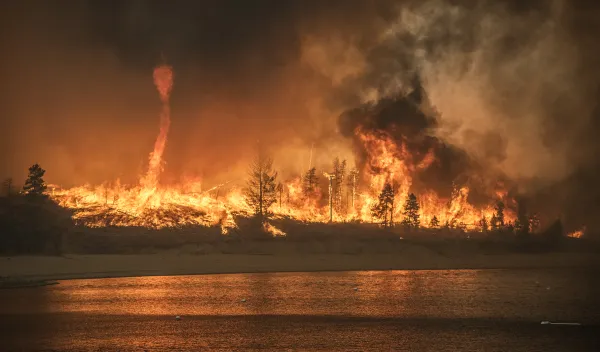
Sounding the alarm: Fire's speed is more threatening than its size
Most news reports about wildfires include the number of acres a given fire has burned, but according to a new study by U.S. National Science Foundation-supported researchers, they should also note how fast the fire is moving. The research found that fast-growing fires caused 88% of the fire-related home destruction between 2001 and 2020, even though they accounted for less than 3% of the fires on record.
'Fast fires' thrust embers into the air ahead of rapidly advancing flames and can ignite homes before emergency responders can intervene. The research team, led by Jennifer Balch, associate professor of geography at the University of Colorado Boulder (CU Boulder), used satellite imagery and a novel algorithm to analyze the daily change in the perimeter of over 60,000 fires in the contiguous U.S. over the first part of this century.
When comparing the perimeter change information with data on fire impact, Balch — who is also executive director of the NSF Environmental Data Science Innovation and Inclusion Lab located at and managed by the CU Boulder Cooperative Institute for Research in Environmental Sciences — and the team found that fires that destroyed more than 100 structures grew as fast as 32.8 square miles per day.
Not only were the fast fires found to cause outsized amounts of damage, but they also got faster over time across the Western U.S. Looking at the fastest of the fires in the data set, the researchers found a 250% increase in the average maximum growth rate among fires in the West over the last two decades.
Notably, the fire risk models land managers and insurance companies use do not account for fire speed.
"Understanding how fires grow and move is critical to predicting their impact and getting people and things out of the way in time," said Matt Kane, program director in the NSF Directorate for Biological Sciences. "This analysis is important in understanding how climate change is altering fire growth and movement and to changing how we ensure the safety of communities in fire-prone areas."
